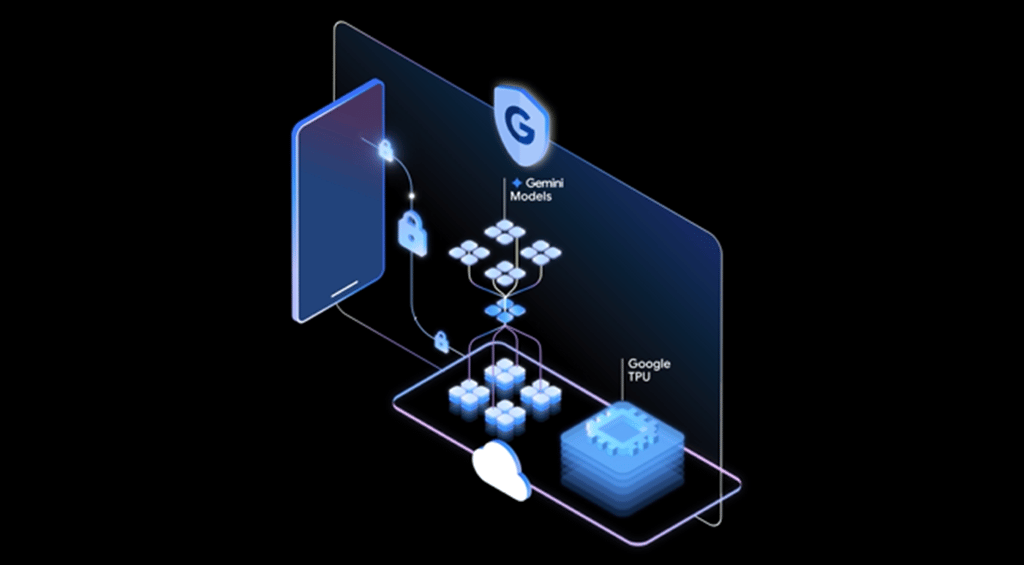Despite Amazon Web Services’ service outage, and service disruptions suffered by other major Cloud service providers over the past year, the growth of the Cloud marketplace continued to accelerate in 2011. This movement will continue to grow in 2012 because it is delivering tangible and measurable business benefits to organizations of all sizes. Since migrating […]
Datamation content and product recommendations are
editorially independent. We may make money when you click on links
to our partners.
Learn More
Despite Amazon Web Services’ service outage, and service disruptions suffered by other major Cloud service providers over the past year, the growth of the Cloud marketplace continued to accelerate in 2011. This movement will continue to grow in 2012 because it is delivering tangible and measurable business benefits to organizations of all sizes.
Since migrating to the Cloud will be unavoidable for any organization that wants to remain competitive in the coming year, here are ten trends which you can count on and should factor into your thinking as you put your plans, policies and procedures in place to capitalize on the unprecedented business opportunities created by the Cloud:
- Debating Public vs. Private Cloud Strategies Will Give Way to Deployment Initiatives that Optimize Hybrid Cloud Environments.
- Only start-ups will succeed in operating entirely on Cloud-based services. For the rest of us, we will depend on a mix of on-premise and on-demand resources for a long time to come.
- Cloud Management Solutions and Strategies Will Take Center Stage.
- Corporate executives and end-users will demand new policies to facilitate the rapid, yet orderly adoption of cloud solutions. Establishing assessment, selection, procurement, implementation and management processes to govern a mixed environment should be a key objective for the new year.
- Cloud Analytics Will Become Pivotal to Optimize the Value of Cloud Solutions.
- As I indicated in my previous commentary in this space, today’s best Cloud solutions have solid analytic capabilities built in and there are many more standalone Cloud business intelligence (BI) tools which can run circles around legacy systems. The Cloud-based analytics not only enable users to better measure their effectiveness, but Cloud vendors are utilizing this data to better understand their customers’ needs and help them benchmark their performance against their peers.
- Only Cloud Solutions With Solid Mobile Interfaces and Social Networking Capabilities Will Win Long-Term.
- We’re all becoming more mobile and social. Enough said.
- New Cloud Services Aimed at ‘Prosumers’ Will Displace Existing Enterprise Systems and Business Processes.
- New, Cloud-based task management tools like Do.com from salesforce.com, goal setting tools like GetWorkSimple, presentation tools like Present.me, and process management tools from PIEmatrix will appeal to end-users and spread across enterprises from the bottom up.
- Prosumer Marketing Efforts Will Knock Down Traditional Vendor Silos.
- Prosumers will no longer tolerate dealing multiple entities within various vendors to satisfy their application and computing needs. Verizon recently reorganized its Enterprise division to respond to this trend and other major suppliers will make similar moves in 2012 to better serve the growing norm of business users working from home or the road, and dependent on mobile devices.
- Legacy Vendors Will Reassert Themselves by Aggressively Marketing Newly Acquired Cloud Assets.
- Over the past year, Verizon acquired Terremark and Cloud Switch, Oracle grabbed RightNow, and SAP bought SuccessFactors to gain a foothold in the rapidly growing Cloud market. Why? Cloud upstarts are stealing their lunch. Oracle’s latest quarterly results reflect the erosion of their legacy business. They and other legacy vendors will move quickly to promote their Cloud assets to counteract the deluge.
- More Cloud Service Disruptions Drive Demand for Cloud Back-Up Services.
- As IT and business decision-makers become more aware of the vulnerabilities associated with Cloud services, they will adopt an assortment of Cloud-based back-up services to safeguard their data and other Cloud resources rather than retreat from Cloud solutions as a whole.
- On-Premise Cloud Alternatives Proliferate.
- A growing number of location-independent Cloud solutions will emerge in the coming year. An example is salesforce.com’s new Data Residency Option (DRO) which will permit users to retain control of their customer relationship management (CRM) data on their own servers behind the firewall.
- Traditional Channel Companies Add Cloud Services, and New Cloud Channels Emerge.
- Moving to the Cloud enterprise-wide requires extensive education, evaluation, selection, implementation and management resources and skills. The Cloud vendors can’t deliver enough of these resources to meet today’s escalating demand. Local and industry-centric channel partners that hold the trust of IT and business decision-makers will play a pivotal role in the adoption process.
Cloud Storage and Backup Benefits
Protecting your company’s data is critical. Cloud storage with automated backup is scalable, flexible and provides peace of mind. Cobalt Iron’s enterprise-grade backup and recovery solution is known for its hands-free automation and reliability, at a lower cost. Cloud backup that just works.
SCHEDULE FREE CONSULT/DEMO
Bottomline? The Cloud is here to stay and will only get better overtime. The coming year is the best time to start to take full advantage of it, and put in place the right policies, procedures and tools to do it right.
Jeff Kaplan is Managing Director of THINKstrategies (www.thinkstrategies.com), an independent consulting firm focused on the business implications of the on-demand services movement. He is also the founder of the Cloud Computing Showplace (www.cloudshowplace.com). He can be reached at jkaplan@thinkstrategies.com.
-
Huawei’s AI Update: Things Are Moving Faster Than We Think
FEATURE | By Rob Enderle,
December 04, 2020
-
Keeping Machine Learning Algorithms Honest in the ‘Ethics-First’ Era
ARTIFICIAL INTELLIGENCE | By Guest Author,
November 18, 2020
-
Key Trends in Chatbots and RPA
FEATURE | By Guest Author,
November 10, 2020
-
Top 10 AIOps Companies
FEATURE | By Samuel Greengard,
November 05, 2020
-
What is Text Analysis?
ARTIFICIAL INTELLIGENCE | By Guest Author,
November 02, 2020
-
How Intel’s Work With Autonomous Cars Could Redefine General Purpose AI
ARTIFICIAL INTELLIGENCE | By Rob Enderle,
October 29, 2020
-
Dell Technologies World: Weaving Together Human And Machine Interaction For AI And Robotics
ARTIFICIAL INTELLIGENCE | By Rob Enderle,
October 23, 2020
-
The Super Moderator, or How IBM Project Debater Could Save Social Media
FEATURE | By Rob Enderle,
October 16, 2020
-
Top 10 Chatbot Platforms
FEATURE | By Cynthia Harvey,
October 07, 2020
-
Finding a Career Path in AI
ARTIFICIAL INTELLIGENCE | By Guest Author,
October 05, 2020
-
CIOs Discuss the Promise of AI and Data Science
FEATURE | By Guest Author,
September 25, 2020
-
Microsoft Is Building An AI Product That Could Predict The Future
FEATURE | By Rob Enderle,
September 25, 2020
-
Top 10 Machine Learning Companies 2020
FEATURE | By Cynthia Harvey,
September 22, 2020
-
NVIDIA and ARM: Massively Changing The AI Landscape
ARTIFICIAL INTELLIGENCE | By Rob Enderle,
September 18, 2020
-
Continuous Intelligence: Expert Discussion [Video and Podcast]
ARTIFICIAL INTELLIGENCE | By James Maguire,
September 14, 2020
-
Artificial Intelligence: Governance and Ethics [Video]
ARTIFICIAL INTELLIGENCE | By James Maguire,
September 13, 2020
-
IBM Watson At The US Open: Showcasing The Power Of A Mature Enterprise-Class AI
FEATURE | By Rob Enderle,
September 11, 2020
-
Artificial Intelligence: Perception vs. Reality
FEATURE | By James Maguire,
September 09, 2020
-
Anticipating The Coming Wave Of AI Enhanced PCs
FEATURE | By Rob Enderle,
September 05, 2020
-
The Critical Nature Of IBM’s NLP (Natural Language Processing) Effort
ARTIFICIAL INTELLIGENCE | By Rob Enderle,
August 14, 2020
SEE ALL
CLOUD ARTICLES
Jeff Kaplan is a seasoned technology analyst and consultant specializing in cloud computing, Software-as-a-Service (SaaS), and the Internet of Things (IoT). He has contributed extensively to Datamation, providing insights on topics such as AI in IT service management, cloud-based enterprise resource planning (ERP), and the evolving role of Chief IoT Officers.







